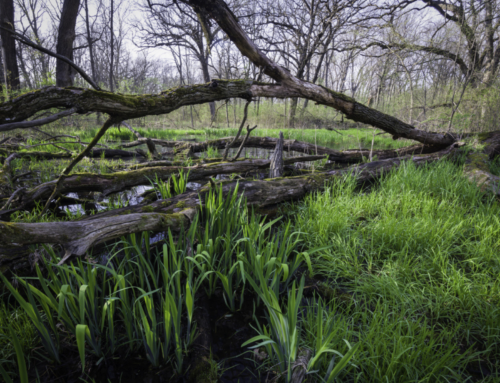July 7, 2016
Chuck Ross Secretary
Agency of Agriculture, Food and Markets
116 State Street
Montpelier, VT 05620
Re: Connecticut River Watershed Council comments on the draft rule to establish
Vermont Required Agricultural Practices
The Connecticut River Watershed Council (CRC) thanks the Vermont Agency of Agriculture, Food, and Markets (“AAFM”) for taking the extended period to draft the Required Agricultural Practices. That extra time allowed for robust stakeholder input in two previous drafts prior to the introduction of this draft in the formal rule making process.
CRC is a membership organization throughout the four state Connecticut River watershed advocating for the Connecticut River since 1952. We are keenly hopeful that these rules will improve its water quality to the benefit of people and the river and its terminus body of water, Long Island Sound. Our concerns when we engaged this rule making process were appropriate farm field and animal management and healthy riparian zones that prevent runoff of nitrogen and sediment from agricultural practices. These draft rules work toward addressing our concerns.
Our comments on the draft rule to establish Required Agricultural Practices (RAPs) follow.
Section 1
- AAFM should add some positive words to the introduction that explain, “Why are we doing this?” Maybe something along the lines of what the logging AMPs offer at the beginning of their rules:
The purpose of the AMPs is to provide measures for loggers, foresters, and landowners to utilize, before, during, and after logging operations to comply with the Vermont Water Quality Standards… The AMPs are proper methods for the control and dispersal of water collecting on logging roads, skid trails, and log landings to minimize erosion and reduce sediment and temperature changes in streams.”
1.2 Stating that the rules will help farmers improve the waters of Vermont through reducing pesticides, erosion, nutrients, and excessive soil from reaching the waters of Vermont and will improve the health of the waters of Vermont would enhance this section. This might be the appropriate section to state that enforcement is not the first step in enforcing these rules. In any event, the text of the rule does not say these rules will help our waters anywhere and should.
Section 2
2.05 AAFM should rewrite this subsection to make it clear that a ditch and other practices should have a buffer zone. The use of the negative in the second phrase is confusing. It might be easiest to write this subsection as two sentences.
2.09 AAFM should add at the end of the sentence, “and the land upon which they are grown” because without that phrase, there is no connection between the word Cropland in the heading and the text since the text only identifies crops.
Section 3
This entire Section brings to the fore issues about whether all farms must meet these rules or just a certain subset of all farms. It is important for AAFM to be clear that these standards will prevent discharges into the waters of Vermont and ALL discharges from any source; agricultural or otherwise without a permit are illegal. It is so for all farms or back yard husbandry all the time. This Section should make that abundantly clear.
To what do the RAPs apply and why needs to be clarified. AAFM needs to explain why AAFM is using that rational and as AAFM is drawing a distinction between what they consider farming and what is backyard husbandry then that simple, new, added declarative statement should lead off this section of the rule. “AAFM does not feel, and the law does not specify that all plant or animal husbandry is farming.”
AAFM can then move on to set trigger levels that bring the RAPs into play under Section 3. Otherwise, drawing a distinction through establishing trigger levels for an activity that the RAPs in its own words apply to all farming is confusing. The text of the rule introduction in Section 1 juxtaposed to this section makes it seem unfair to those farms that are say one chicken above the trigger levels.
3.2 AAFM has not in all of the practices listed in the paragraphs (a-k) set out anything about establishment and maintenance of riparian buffers. Since this Section details activities to which RAP standards apply, riparian buffers should be on the list. AAFM could add them as part of (f) or a new subsection.
Section 6
6.07 (a) AAFM set out 25 feet as the standard buffer along waters of Vermont. CRC is aware of various studies by various reputable sources including Yale School of Forestry, the USACE, and literature review studies and although they differ in their suggested minimum widths; none that we are aware of is less than 30 feet wide. Federal and State of Vermont riparian grant programs require a minimum of 35 feet and more in cases with active erosion up to 100 feet along streams.
The independent studies looked solely at this minimum distance from the perspective of protecting the water body and wildlife. The federal programs look at long-term bank stability. There may be other elements used as part of the AAFM decision process in reaching the 25’ width that were not solely in the interests of water, wildlife, or bank stability. AAFM, as part of the required responsiveness summary prepared on comments to this draft should give a rationale for setting the standard at 25 feet.
6.07 (e) (f) (g) Together these subsections take the notion of a healthy riparian buffer zone and reduce its worth as protection of the waters of Vermont. The best of the literature on riparian zones does not speak about healthy riparian buffers as 3-inch high grass but as full fledged undisturbed natural vegetation that has grass, ferns, bushes, trees, as well as leaf litter available to the stream and on the ground as duff. According to most sources, rough multilayered canopy with its shade and plant litter is what constitute a riparian buffer. The woody debris feeds the stream and the duff is what slows runoff and allows it to infiltrate. Grass contributes little to the duff layer and is not good at slowing overland runoff.
A stream without a natural riparian buffer is less likely to support good cold-water fish populations because they depend on cooler water temperatures to some level aided by the shade provided by overhanging trees. Grass does not contribute noticeable shade to a river.
Stream health depends on contributions of woody debris from streamside natural growth. Woody debris is a significant link between the primal energy produced by the sun and the aquatic food chain. Grass does not contribute woody debris to a river.
A healthy root matrix provided by large woody plants and trees enhance streambank stability far better than does any other plant community near water bodies. The interlacing of large plant roots remains an important contributor to bank stability in tests throughout the river sciences. Grass does not contribute to the root matrix that provides streambank stability.
The draft RAPs allow for the grazing of livestock in buffer zones, which effectively allows animal defecation in these riparian buffers. Allowing active grazing does seem like direct manure application without the intermediary and a contradiction to the prohibition on spreading of manure. For buffers to remain even minimally vegetated and to have stable banks, livestock should not graze in the buffer zone except in those few situations where grazing animals can control invasive plant species.
Hayed, fertilized, and grazed grass does not constitute a riparian buffer regardless of width. CRC calls on AAFM to rewrite this portion of the RAPs and move the requirement for riparian buffers toward a true and valuable real riparian buffer zone standard either in this proceeding or at the 2018 rewrite of these RAPs.
Section 7
(b) (2) The second sentence does not say what it should say. Approved grazing plans we believe should protect the 25 feet between the top of bank and other field uses beyond the 25 feet, not protect the area between “the top of bank and the surface water.” That would unlikely be 25 feet in most situations and given the definition of top of bank, the land would be sloped down to the water. AAFM should rewrite this sentence.
The RAPs do not identify any specific methods by which farmers should exclude their livestock from streams. The RAPS should identify preferred approaches while including the flexibility for farmers to be innovative. Actively eliminating livestock only from waters with unstable banks or evident erosion is to invite exactly those conditions. As one approach, natural vegetative buffers that include willows, alder, and other scrub bushes provide one innovative mechanism to keep animals from indiscriminately crossing a stream or entering it to take water.
CRC thanks AAFM for their inclusive process to gather input from interested parties beyond the farming community through the extensive number of hearings held around the state. We hope AAFM will incorporate our suggested changes but once AAFM completes this phase of the rule making, CRC stands ready to help AAFM with community outreach and education that will help make these rules an effective reality.
CRC has a strong and active restoration program that has helped a wide variety of private landowners and farmers with project management, technical expertise, and funding to protect their investment in the Connecticut River valley’s valuable soil. We look forward to continuing this work to build effective riparian buffers throughout our watershed.
For the Connecticut River,
David Deen
Upper Valley River Steward







